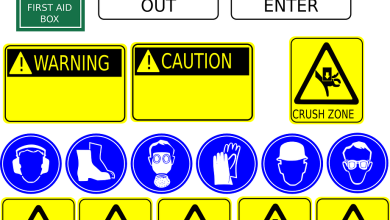Dealing with Workplace Stress and Its Impact on Safety

Stress has evolved into an inevitable companion for many workers in today’s work culture, which is characterized by a rapid pace and high levels of expectation. Stress in the workplace can have a significant negative effect not only on an individual’s health but also on the security of the business as a whole. The purpose of this article is to shine a light on the adverse effects of workplace stress on safety and to provide practical solutions for properly managing stress in order to promote a safer and healthier working environment.
Comprehending the Stress of the Workplace
The term “workplace stress” refers to the mental, emotional, and physical strain that employees face as a result of heavy workloads, tight deadlines, conflicts, a lack of control, or inadequate support networks in their places of employment. Although a certain amount of stress can be motivating, chronic and excessive stress can have significant effects, including lower job satisfaction, increased absenteeism, and weakened safety measures. While some levels of stress can be motivating, excessive and chronic stress can have severe implications.
The Effects of Stress in the Workplace on Employee Safety
Stress inhibits cognitive skills such as memory, concentration, and problem-solving abilities, making it difficult for employees to focus on vital safety tasks and respond effectively in emergency circumstances. Stress also makes it more likely that employees will make mistakes in their decisions.
Stress can shorten an individual’s attention span and make it more difficult for them to recognize potential dangers or threats in their working environment. This can lead to a reduction in their situational awareness. Reduced situational awareness might increase the risk of getting into an accident or getting hurt.
Increased exhaustion Prolonged stress can lead to chronic exhaustion, which not only degrades physical performance but also decreases awareness and reaction time. This can be a direct result of increased cortisol levels, which is a hormone that regulates stress response. Employees that are fatigued are at a greater risk of making errors as well as becoming engaged in accidents.
Reduced Communication and Collaboration High-stress settings frequently create unpleasant and strained relationships among coworkers, which can lead to decreased communication and decreased collaboration. When there are problems with communication and teamwork, safety standards might be put at risk because employees may be reluctant to speak up or provide essential information.
Techniques for Handling the Stress of the Workplace
Employers should develop an inclusive and supportive work environment, one in which employees feel comfortable sharing stress-related difficulties without fear of judgment or retaliation, and employers should also promote a culture inside their organizations that is supportive. Promote open communication, offer resources for stress management, and encourage a healthy balance between work and personal life.
Training and Education: Provide training programs that enhance knowledge of stress management approaches such as mindfulness, time management, and effective coping mechanisms. Offer these training programs to your employees. Provide your employees with the knowledge and tools to determine what causes them stress and how to become more resilient in the face of adversity.
Establishing clear expectations with regard to job tasks, deadlines, and work objectives is essential. In addition, ensure that you have a realistic workload. Make sure that the workloads are acceptable and manageable so that employees can keep their attention and focus on the duties that are necessary for maintaining safety.
Encourage Regular Breaks and Time Off: Provide your staff with the opportunity to recharge their batteries and lower their stress levels by encouraging regular breaks throughout the workday. Encourage the utilization of vacation time and time off in order to reduce the risk of burnout and to better one’s overall health.
Integrating approaches for stress management into safety training programs is one way to make safety training and awareness more effective. Put an emphasis on the necessity of stress reduction and mental well-being as fundamental components of preserving a safe environment for workers to perform their jobs.
Employee aid Programs (EAPs) and Confidential Counseling Services are two examples of employee support systems that can be implemented in order to offer aid to workers who are dealing with high levels of stress. When it is essential, these resources can provide direction, strategies for coping, and referrals to professionals in the field of mental health.
Conclusion
Stress in the workplace presents a serious obstacle, not only to the health and safety of individual workers but also to the integrity of the company as a whole. Employers are able to cultivate a work environment that places a priority on employee health, lowers the chance of accidents, and boosts productivity by gaining an awareness of the influence that stress has on the safety of the workplace and putting into practice effective ways for managing stress. Organizations are able to realize a well-balanced and secure working environment that is conducive to the flourishing of their employees by adopting an all-encompassing strategy that targets the underlying factors that contribute to stress, encourages open communication, and provides employees with assistance in developing and implementing effective stress management strategies.




